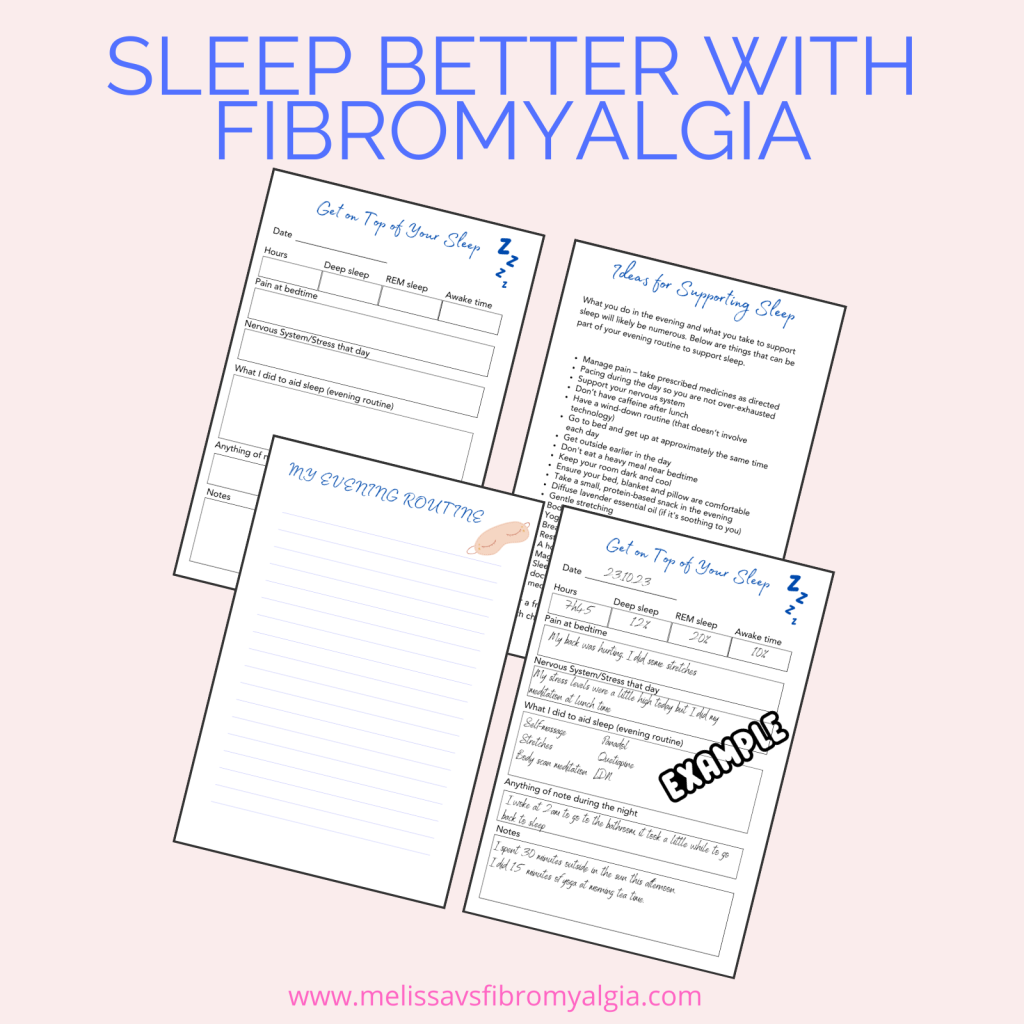Last Updated on November 4, 2023 by melissanreynolds
I’m not sure at what point you’re considered a chronic insomniac, but I’d suggest 20 years and many failed workarounds counts.

Since my teenage years, I have struggled with sleep.
Insomnia is defined is trouble falling asleep, staying asleep, waking too early and poor quality sleep.
Fibromyalgia sleep is often devoid of deep and REM sleep. Two important stages of sleep where the brain does it’s self cleaning. It explains the fatigue, pain and brain fog.
Watch here, or read on
My before picture as a chronic insomniac
In 2010, I would get up at 5am, stand in a freezing kitchen waiting for my heating pad to warm up and take it back to bed. I would spend the next two hours dozing and hoping that the heating pad would help the high neck pain levels. I would spend the day at work in a fatigued stupor, barely getting by. In the evening I was too fatigued to do anything other than watch television series on DVD that I had already watched before. I’d be exhausted, but toss, turn and stare at the ceiling for a long time. Then I would wake frequently. Like every 30 minutes. The nights were long, painful and upsetting. I’d wake feeling worse than when I went to bed.
Over the years I have tried many things. None of which did much. Until very recently.
Here is exactly what I am doing to sleep (mostly) well now.
As you may know it starts with a holistic plan. We must help calm down our overactive nervous system, which I do with meditation (about 1pm every day rather than a nap) and breathwork. Avoiding stress as much as possible. Managing pain as best I can (my new If This, Then That plan). Avoiding overtiredness by pacing well.

And then we get to what I actually do to go to sleep.
- Take Recovery Factors amino acid supplement at 8.30pm
- Take magnesium (every few days, see the Variations section below)
- Slow release paracetamol
- Other pain relief, if needed
- Quetiapine at 9pm
- Low dose Naltrexone 4mg at 9.30pm
- Get ready for bed
- Read
- Do a body scan meditation
- Fall peacefully into sleep land
- Get up once or twice
- Wake up nearly feeling refreshed (I don’t judge until I’ve shaken off the sleepiness with my heating pad, toast and cuppa for 15 minutes).
I can generally sleep 7-8 hours per night. Get into the normal range for deep and REM sleep. And feel clear in my brain in a way I have never felt before. It’s not perfect. And obviously I must do rather a lot to make it work. But it works for me. Hopefully something here inspires you to consider adding to your routine.
I’m not longer a chronic insomniac – with these treatments, I am generally getting to sleep well, getting back to sleep well and achieving good quality sleep!
Variations
My body does have it’s ups and downs. And it seems to get used to the routine, so I have to change it up. I alternate between taking three Recovery Factors tablets, or two Recovery Factors and a magnesium tablet.
I’d like to add some lemon balm and other natural supports but as I am currently playing with Benfotiamine and folate, I don’t want to keep throwing new things in without due evaluation. I’ll report back on the above two supplements when I have news.
I offer a Get On Top of Your Sleep Worksheet Kit to help you create your best sleep routine. You can get that here.

Tell us, what are your best sleep tips?
